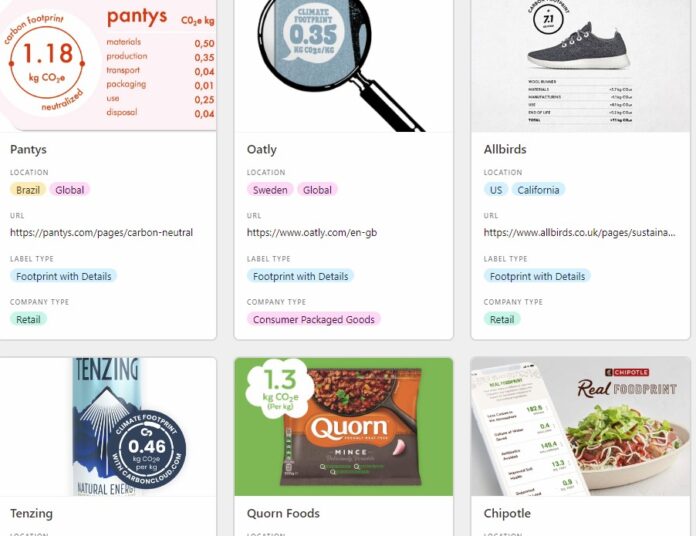The cause of climate change is well established by science. Carbon emissions are the problem. These human-caused emissions come from every sector and every transaction we engage in.
Where the Government of Canada has focused on a market-driven solution to price carbon pollution, and additional regulatory frameworks focused more specifically on the energy and transportation sectors, direct engagement with the public is an avenue still to harness.
The first carbon dividend payments to Canadian families that we received in the last week may make citizens take notice of the efforts of the federal government to tackle climate change. But there is more to be done to engage Canadians to understand the emissions issue and how their carbon footprints can alter to contribute to mitigating these emissions. That is one of the purposes of creating carbon labelling.
What’s Involved with Carbon Labelling
Today, nutritional and content labelling can be found on packaged foods. The Government recently announced plans to enhance those labels. Why, because of concerns that Canadians need to learn more about what they eat so that they can make healthier choices.
Carbon labelling would serve a similar purpose by allowing Canadians to make healthier choices about carbon emissions. A carbon label would let consumers understand the environmental impact of items they purchase and consume. The label would contain the total carbon footprint of the product.
Is it being done elsewhere? Look for some examples at the top of this article courtesy of the CleverCarbon website.
What every consumer needs to understand is that we all produce a carbon footprint. It’s not just the fossil fuel companies, the energy and power companies, or the transportation sector, manufacturers, and service industries. It is also families. Everything we consume or do produces a carbon footprint. That’s why engaging consumers directly through carbon labelling for products and services is so important.
Carbon labels need to reflect the lifetime contribution of what goods we buy and the services we purchase. This type of labelling is referred to as “cradle-to-grave.”
It should be understood that every carbon footprint is different even if we are talking about similar products. And within an individual product line, if the manufacturer uses more than one supplier for the same finished goods, the carbon footprint of each will differ.
Cradle-to-grave includes:
- Materials – sourced components of the product and the packaging
- Manufacturing – emissions from the process and from the energy provider that serves the facility
- Transportation – from sourced materials to warehousing to wholesaler to retailer
- Usage – emissions from daily use such as washing, drying, etc.
- Disposal – landfill or upcycling and recycling
Currently, there is a body of regulations that can be used to help in the implementation of carbon footprint quantification standards. These include:
Labelling to date comes in three flavours:
- Graded – A, B, C, or low, medium, and high
- Footprint – a numerical value prominently displayed on the product
- Details – breaking down the cradle-to-grave carbon contributions individually
Carbon Labelling Then What
In a world where we have access to portable digital technology in the form of smartphones with the ability to scan bar codes, carbon labelling can be linked to apps that provide consumers with personal carbon footprint calculations to track the environmental impact of their goods and services purchases. One of these apps has been developed by an Australian software company Greenswrm. It is one of a growing number that recognizes through carbon labelling we can change consumer behaviour and help mitigate climate change.
















[…] a posting a few days ago I called for the national adoption of carbon labelling. By labelling “cradle-to-grave” carbon content for all the goods and services Canadians […]
[…] and end-of-life strategies to reduce your environmental footprint. You may want to introduce carbon labelling on products and services so that customers can see your sustainability […]